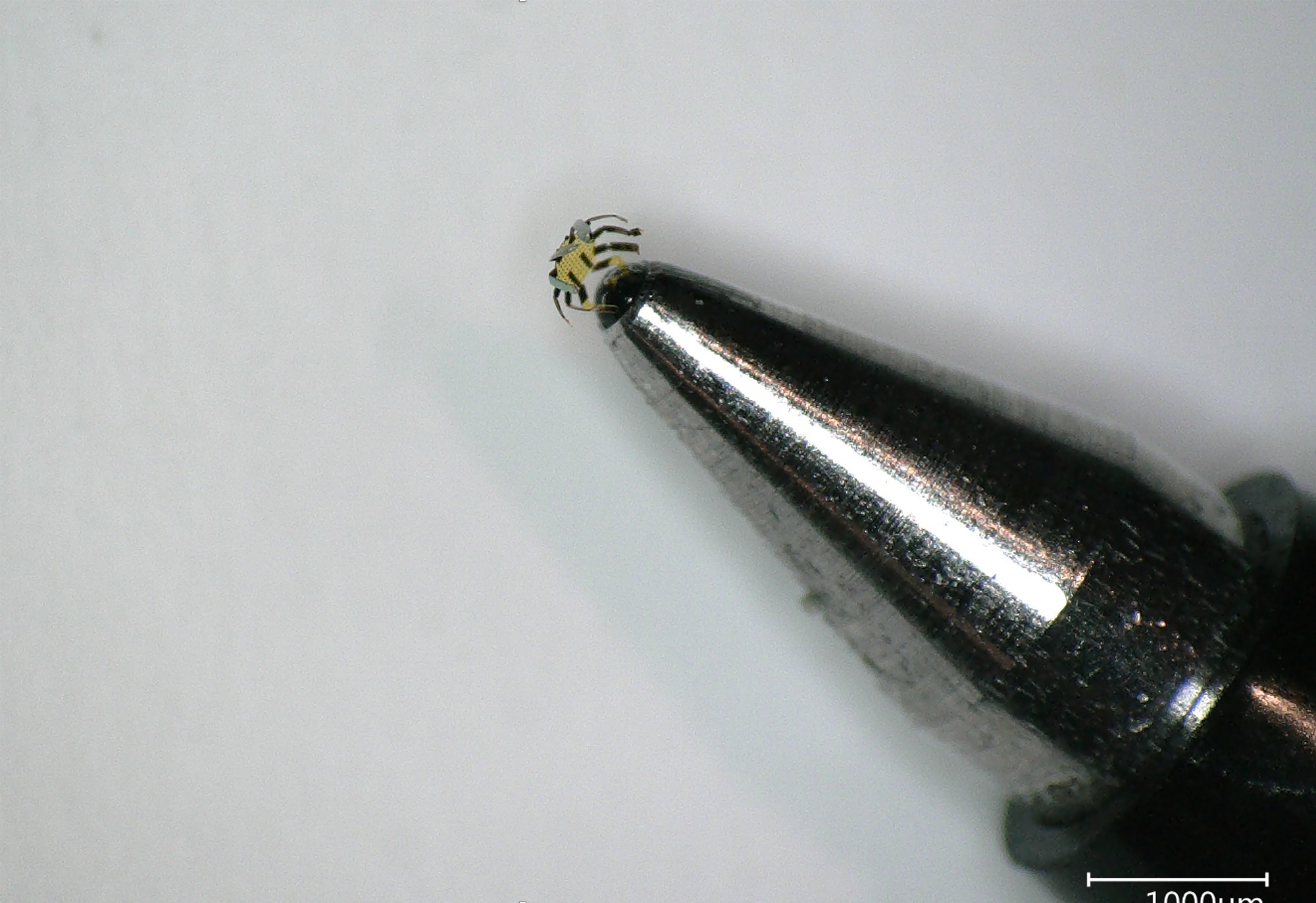AZoRobotics speaks with Professor John A. Rogers from Northwestern University about his creation of microscale robots inspired by crabs. Once out of the exploratory phase, these tiny microrobots could carry out practical operations inside compact remote spaces.
Robotics is an exciting field of research, and the development of microscale robots is a fun topic for academic exploration. What inspired you to begin your research into creating the world’s smallest remote-regulated walking robot?
We are part of a broader community of academic researchers in microrobotics, where one vision is to use the technology for the next generation of minimally invasive surgeries – microrobots to perform biopsies, extract malignant tissues, stop internal bleeding, etc. Several examples of swimming microbots exist, but achieving devices capable of moving on solid surfaces is much more challenging. We decided, therefore, to gear our research around this sub-field of microrobotics.
Why did your team choose to take inspiration from a peekytoe crab?
Frankly, this was partly based on the whim of the postdoctoral fellow who was leading the project. We have similar types of robots in different shapes – grasshoppers, inchworms and others. Our manufacturing methods are quite versatile in that sense.
Tiny robotic crab is smallest-ever remote-controlled walking robot
Tiny robotic crab is the smallest-ever remote-controlled walking robot. Video Credit: Northwestern University
What are some of the movements that this technology can undertake, and why are these movements advantageous?
Our robots can walk forwards and backwards, they can turn left or right, and some of them can also jump. This work is exploratory in the sense that we are attempting to develop a broad base of capabilities rather than to satisfy a set of narrow requirements around one specific application.
One can also think of robots of this type as small-scale assemblers to create additional robots, perhaps those with even smaller sizes.
What are some of the drawbacks associated with traditional terrestrial robots, and how did you address these constraints to enable untethered terrestrial robots?
The main challenges in terrestrial microrobots are in (1) the manufacturing techniques (i.e., how does one do construction at this scale), (2) the mechanical actuators (i.e., what kind of artificial muscles can be used to cause the robots to walk, jump, etc.) and (3) the ‘stiction’ that tends to dominate as size scales reduce (i.e., what type of feet are needed to propel the robots but to avoid sticking to surfaces). These challenges have prevented others from achieving robots at the size scales of the devices that we have reported.
Can you provide an overview of how the robotic crab works? What drives its motion, and what is pop-up assembly technique?
The motions are driven by shape changes in a special metal alloy known as a shape memory alloy. Local heating using the scanned, focused output of a laser beam allows these materials to be actuated in a time sequence to create a walking ‘gait’.

Image Credit: Northwestern University
The pop-up assembly technique is the method by which we convert our flat, multilayer structures (fabricated using techniques borrowed from the semiconductor industry) into 3D forms needed for robots. The mechanisms are conceptually similar to those of a child’s pop-up book, where a stretched elastomer substrate creates compressive forces on the flat structures to cause them to buckle upward into desired 3D shapes.
How did you test the efficacy of your robot, and what did you discover?
We evaluated the maximum and minimum speeds and we investigated the ability to walk on different types of surfaces. We found that the robots work very well.
After the success of your initial study, what are the next steps for your research?
Next, we would like to add limbs and ‘claws’ to our robots that can be used to carry out tasks, i.e., grasp objects and release them. We also are working to integrate sensing and wireless communication capabilities.
When it comes to upscaling the production of the robot, what equipment would you need, who would provide it, and what partners do you hope to accompany you on this journey?
Our manufacturing techniques rely strongly on methods that serve as the foundations for fabricating integrated circuits. Partnerships with companies in that industry would make sense.
About Professor John A. Rogers
 Professor John A. Rogers began his career at Bell Laboratories as a Member of Technical Staff in the Condensed Matter Physics Research Department in 1997 and served as Director of this department from the end of 2000 to 2002. He then spent thirteen years on the faculty at the University of Illinois, most recently as the Swanlund Chair Professor and Director of the Seitz Materials Research Laboratory. In the Fall of 2016, he joined Northwestern University as the Louis Simpson and Kimberly Querrey Professor of Materials Science and Engineering, Biomedical Engineering and Medicine, where he is also Director of the recently endowed Institute for Bioelectronics. He is a member of the National Academy of Engineering, the National Academy of Sciences, the National Academy of Medicine and the American Academy of Arts and Sciences.
Professor John A. Rogers began his career at Bell Laboratories as a Member of Technical Staff in the Condensed Matter Physics Research Department in 1997 and served as Director of this department from the end of 2000 to 2002. He then spent thirteen years on the faculty at the University of Illinois, most recently as the Swanlund Chair Professor and Director of the Seitz Materials Research Laboratory. In the Fall of 2016, he joined Northwestern University as the Louis Simpson and Kimberly Querrey Professor of Materials Science and Engineering, Biomedical Engineering and Medicine, where he is also Director of the recently endowed Institute for Bioelectronics. He is a member of the National Academy of Engineering, the National Academy of Sciences, the National Academy of Medicine and the American Academy of Arts and Sciences.
Disclaimer: The views expressed here are those of the interviewee and do not necessarily represent the views of AZoM.com Limited (T/A) AZoNetwork, the owner and operator of this website. This disclaimer forms part of the Terms and Conditions of use of this website.